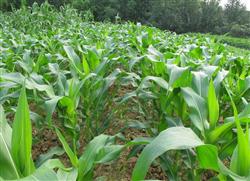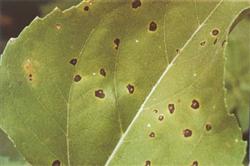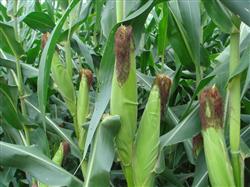How to breed corn?

How to breed corn? Please introduce the natural cross-pollination habit of maize and the heterozygosity of genetic basis, as well as the breeding procedure of utilizing the heterosis of F1 generation among inbred lines, which forms the particularity of maize breeding. Almost without exception, any successful corn breeders and research institutes separate a large number of inbred lines from rich original materials or germplasm banks, and combine a large number of hybrid combinations for experiments. finally, only a few excellent hybrids were selected and put into production. Because the probability of occurrence of excellent inbred lines and outstanding hybrid combinations is very low. When there are 1 loci heterozygous, the frequency of dominant homozygous and recessive homozygous in inbred progenies is 1: 4, and when there are n loci, the frequency of homozygous individuals at all loci is (1 / 4) n. At present, there are only more than 20 parent inbred lines used to prepare a large number of hybrids in China, and the same is true in the United States. There are only 40 parent inbred lines that can be widely used, all of which are selected from a large number of panicle rows. Only American Vanguard seed Company has to screen about 7000 new lines every year, arrange the identification of 15000 hybrid combinations, and plant 450000 plots in about 250 different locations, through all these experiments. In a normal year, 7-10 commercial hybrids can be put forward every year. Thus it can be seen that the huge workload of maize breeding. Generally speaking, it is the common experience of maize breeding at home and abroad to make use of rich germplasm resources, separate a large number of inbred lines, prepare a large number of hybrid combinations, and breed a few excellent inbred lines and strong dominant hybrids after careful identification and screening. it is unrealistic to expect to select excellent inbred lines and hybrids from a small number of materials. Maize breeding is mainly based on the use of heterosis, starting from the selection of inbred lines, and the main purpose is to select and utilize single hybrids. The breeding criteria of inbred lines are high reproductive yield, high quality, multi-resistance, density tolerance and excellent comprehensive characters. The breeding method of inbred lines is related to the types of original materials and breeding target characters. Bicyclic breeding: using single hybrids and some commercial hybrids as raw materials, generally adopting the conventional method of bicyclic breeding; 2. Population improvement method: when using comprehensive varieties or populations with complex genetic basis as original materials to select inbred lines, there are two methods: one is to combine population improvement and separate inbred lines while recurrent selection. The other is to directly isolate inbred lines according to the breeding method of bicyclic lines; 3. The comprehensive method of backcross improvement and directional multiple crossing is an effective way to improve some shortcomings of inbred lines. 4. Haploid breeding: including anther culture, parthenogenesis, parthenogenesis; 5. Mutagenic breeding: maize seeds, pollens and seedlings were treated with radiation to produce variation; 6. Gamete selection method and bunker improvement method: the former is less used because of its tedious procedure and the latter because of its limitations. 7. Biological breeding technology: since the 1980s, especially in the 1990s, molecular biotechnology has been widely used in maize breeding. Molecular marker technology has been widely used in maize genetics and breeding. Under certain conditions, it can accelerate the process of maize breeding and improve the effect of selection; it can be used in the study of genetic diversity to identify the diversity and differences of maize germplasm; in the study of qtls, we can find out the locus effect and effect of yield and quality traits controlled by multiple genes, and understand the mechanism of heterosis. For gene mapping, we can clone genes to make accurate gene maps of maize, which may eventually decipher all the genetic codes of maize and regulate the genetic behavior of maize traits. With the continuous improvement and improvement of molecular biotechnology, it will be more widely used in the research of maize genetics and breeding and promote the innovation and development of this discipline. Click to get more corn planting techniques click to get more food crop planting techniques
- Prev

What are the common diseases and insect pests of sunflowers?
What are the common diseases and insect pests of sunflowers? Please introduce sunflower to the following diseases and insect pests: Sclerotinia sclerotiorum ① rotation stubble; ② seed treatment, uncoated seeds are mixed with 50% carbendazim wettable powder according to 3% seed amount; ③ soil treatment, 50% carbendazim wettable powder 250g / mu and fine sandy soil to form medicinal soil.
- Next

What affects the high yield of summer corn?
What affects the high yield of summer corn? Please introduce that there are four problems that can not be ignored in summer maize production, which have become important factors restricting the high yield of summer corn: first, careless seed selection. Some farmers have the mentality of being greedy for bargains, buying low-priced "improved varieties" from small vendors or informal seed management departments.
Related
- The first cup of black tea in spring, the flavor and history of tea gardens in Kenya, Africa
- The computer can not only choose potatoes, but also grow tea rice. AI will grow winter oolong tea champion.
- It is not only the inflated tea bitten by insects, but also engraved with the four seasons tea in Beipu.
- The Oriental Beauty Tea Festival in Zhuxian County takes the stage at the weekend to experience the plus-size feast of oil tea.
- & quot; Oriental Beauty Tea & Exploration of Emei in Hsinchu, the hometown of quot;
- The new variety of strawberry "Tainong 1" dessert is the first choice with mellow aroma. Crimson gorgeous
- History of Tea in Taiwan: from Wild Inner Mountain to Export Tea Garden
- Two types of Taiwan Oriental Beauty Black Tea won the British three-Star Award for Childhood Tea Xiang Zhang Jiaqi changed from pilot to champion tea maker.
- Banana species and varieties: the planting history of Taiwan Xianren banana and dwarf banana is long, is banana disease resistant?
- Coffee planting Technology: Qianjie Coffee from Seedling to harvesting

